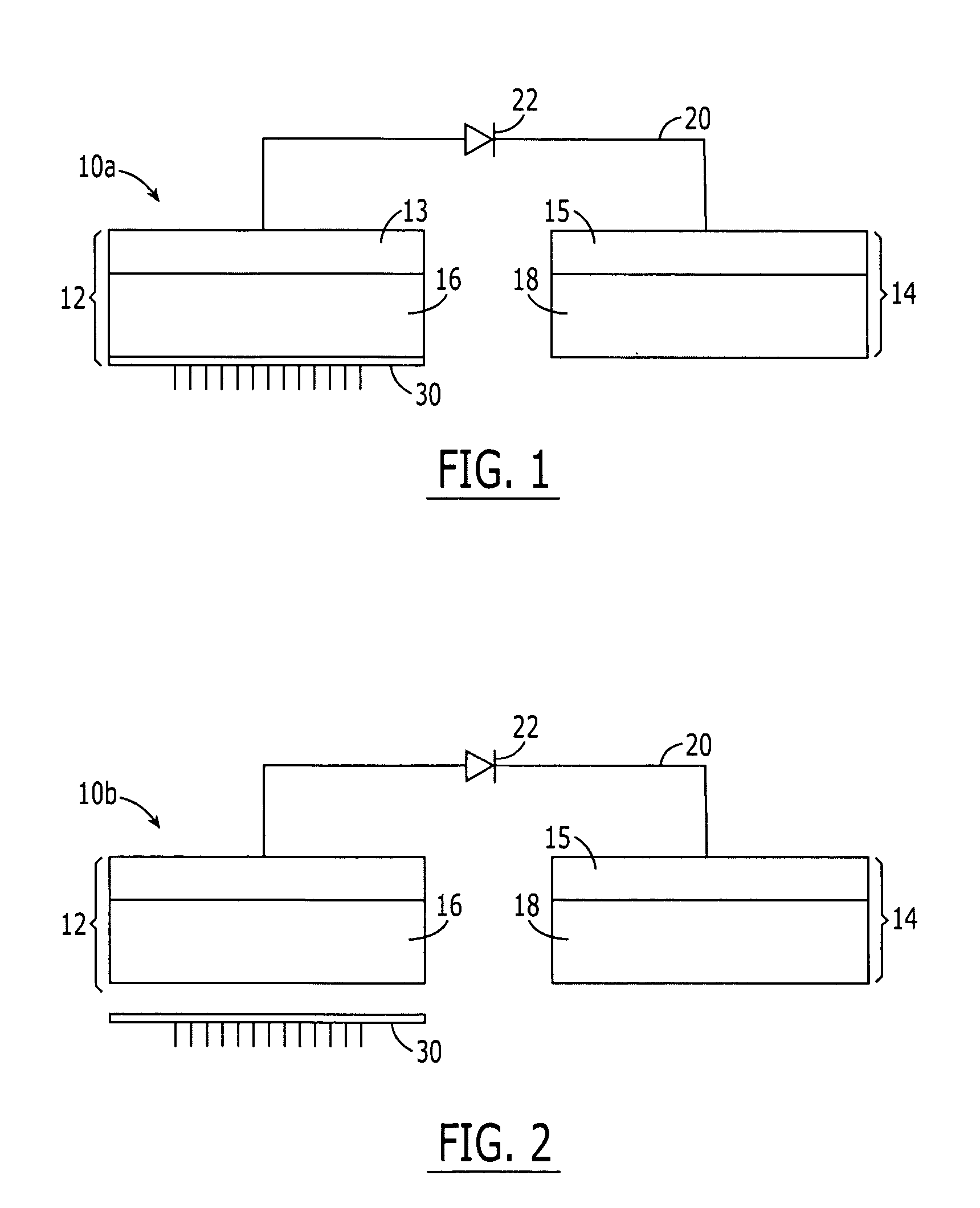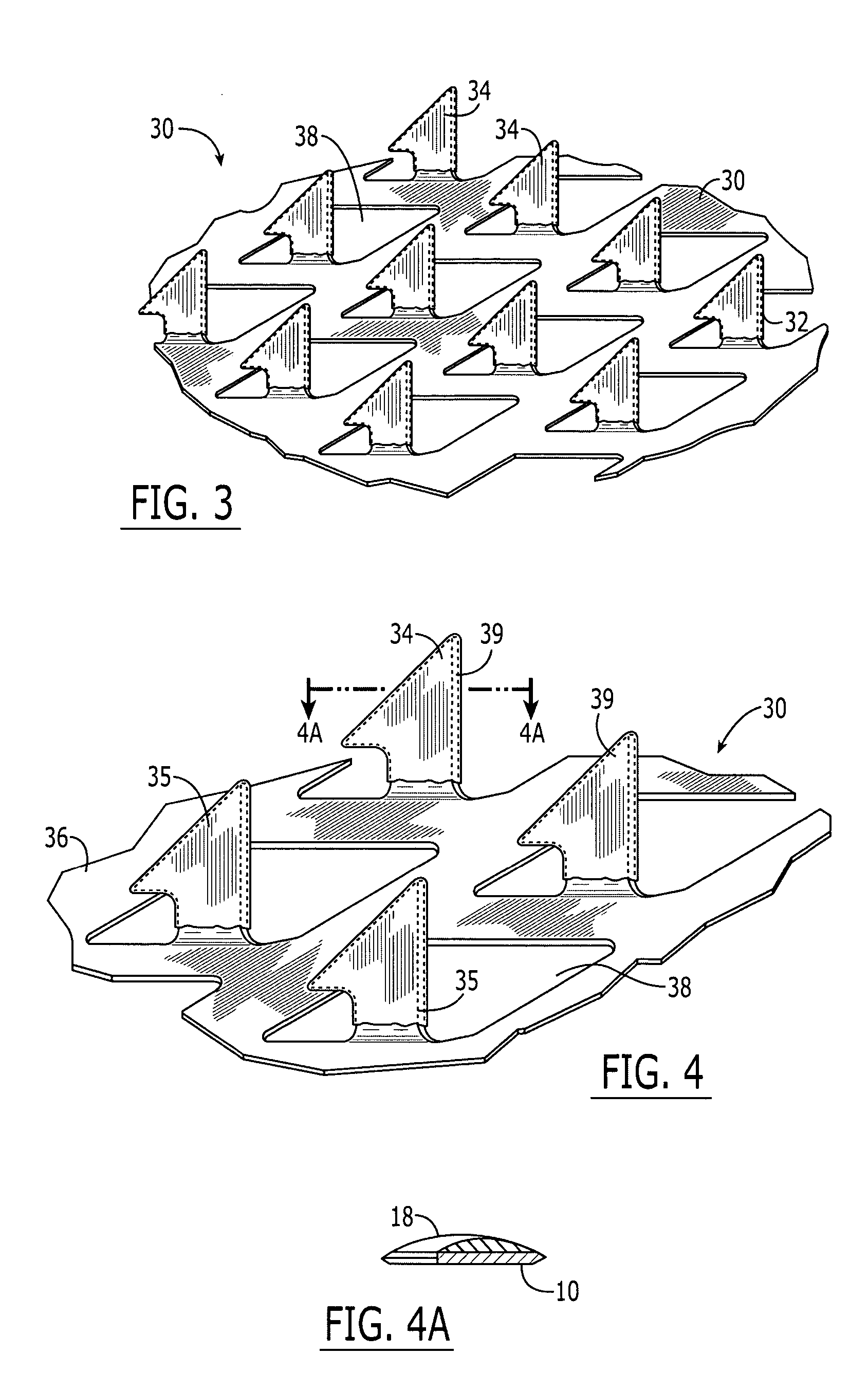System and method for transdermal vaccine delivery
a technology of transdermal and intracellular vaccines, applied in the direction of antibody medical ingredients, surgery, therapy, etc., can solve the problems of poor patient compliance, high rate of diffusion through the stratum corneum, and many active agents that are completely ineffective or have radically reduced efficacy, etc., to slow down the ramping up of the electric condition
- Summary
- Abstract
- Description
- Claims
- Application Information
AI Technical Summary
Benefits of technology
Problems solved by technology
Method used
Image
Examples
example 1
[0185] This experiment studied the effect of the mode of delivery of DNA and the effect of iontophoresis on gene expression of the marker gene encoded by the delivered DNA. A microprojection member combined with an iontophoresis device was used to increase intracellular delivery of DNA and gene expression in the hairless guinea pig (HGP). Six groups using microprojection array delivery, in addition to one DNA delivery group receiving DNA by intra-dermal injection using conventional hypodermic needles, and one negative control group were studied. Application of electroporation pulses through electroactive needle electrodes inserted into the skin is known to increase gene expression and was included in this experiment as a positive control.
[0186] Group 1: DNA delivery by coated microprojection array without any iontophoresis or electroporation.
[0187] Group 2: DNA delivery by coated microprojection array followed by electroporation applied through a separate electroactive 2×6 needle ...
example 2
[0204] When protein vaccines are delivered extra-cellularily, humoral responses are obtained, as the presentation of the antigen occurs via the class II MHC / HLA pathway. An additional cellular immune response is achieved only when protein vaccines are delivered into the cytosol (or when the antigen is produced intracellularly—as replicating vaccines or DNA vaccines). In this example, combination of transdermal polypeptide vaccine delivery by microprojection array technology using dry coated arrays or gel reservoirs with iontophoresis to assist intracellular delivery is studied. Immune responses to Hepatitis B virus surface antigen (HBsAg) protein are monitored. Nine treatment groups are evaluated:
[0205] Group 1: HBsAg protein-coated microprojection array (MA) delivery (5 min application time) without any iontophoresis or electroporation.
[0206] Group 2: HBsAg protein-coated microprojection array delivery (5 min application time) followed by 15 min iontophoresis after removal of the...
PUM
| Property | Measurement | Unit |
|---|---|---|
| viscosity | aaaaa | aaaaa |
| viscosity | aaaaa | aaaaa |
| thickness | aaaaa | aaaaa |
Abstract
Description
Claims
Application Information
 Login to View More
Login to View More - R&D
- Intellectual Property
- Life Sciences
- Materials
- Tech Scout
- Unparalleled Data Quality
- Higher Quality Content
- 60% Fewer Hallucinations
Browse by: Latest US Patents, China's latest patents, Technical Efficacy Thesaurus, Application Domain, Technology Topic, Popular Technical Reports.
© 2025 PatSnap. All rights reserved.Legal|Privacy policy|Modern Slavery Act Transparency Statement|Sitemap|About US| Contact US: help@patsnap.com



